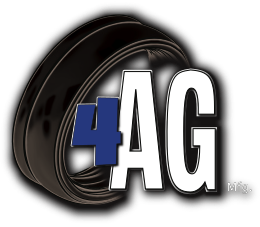6 Things to Check While Readying Your Planter for the Next Season
Spring is fast approaching and farmers are preparing to head back to the fields with their planters in tow. It is considered of utmost importance that your planter functions at optimal levels. A planter that has not been maintained or set up properly will most likely result in irregular seed depths (faulty cultivator gauge wheel), open seed slots, seeds at the surface, and a host of other issues.
Planter Maintenance Checklist
#1
Begin your inspection by checking the meter units. Take apart the meter and thoroughly clean the unit with a soap solution. Make sure to never use kerosene or oil in metering units. If the plastic cover has cracks in it, replace it with a new one. Replace broken fingers and use a feeler gauge to tighten them the right amount. Once done, turn your attention over to the backplate and seed brushes.
#2
How to tell your planter unit is coming loose? Try lifting the unit and moving it from side to side. If it gives way too easily, your planter is wobbly. You can also look at the planter from the side and check if all the units are at the same height. Usually, this is caused by lost or loose bolts. Also, take a look at the seed hoppers while checking the planter units.
#3
A seed opener disk that is too small will not place the seeds at an appropriate depth. In old blades, the disks should touch for 3 inches whereas in new ones. They should touch for 1-1.5 inches. Stick a card between the openers and move them close, a disk in good shape will give a V-shaped seed slot as opposed to a W-shaped one in a worn-out disk.
#4
Too much wear can lead to the end of the seed tubes curling inwards, which in turn catches the seeds that have just been sown. To minimize damage to the tubes, fasten a guard around them.
While you’re at it, check if the seed farmers are well-adjusted and still okay to run for another season.
#5
Make sure the cultivator gauge wheel sits tight and flush against the seed disks. Change the washers if needed. Finally, make sure the wheel arm isn’t bent.
The bearings should be fastened until they are just perfect, not too tight, or not too loose.
#6
Now that you have taken care of all the major components of your planters, run a quick check to test the alignment, insecticide boxes, and fertilizer unit. At the very end, look through the chains, sprockets, and tires.
Wheels and Tires for Farmers by Farmers
4 AG MFG, Oklahoma City planter wheels and tires are proudly manufactured in USA. Our tires are easy to assemble and extremely long-lasting. Our website lists all the way our wheels and tires are superior to that of a regular manufacturer. To find a dealer near you, scroll down to the contact section on our homepage.

